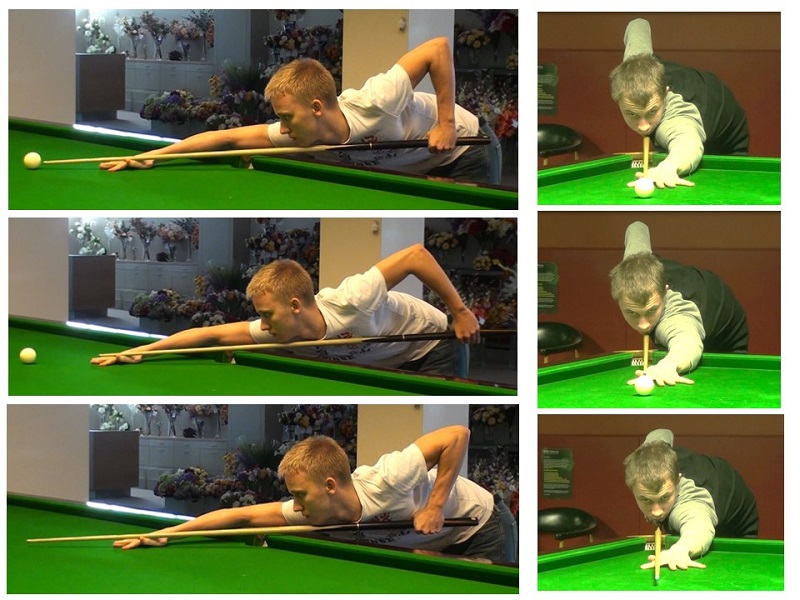All the Champions I have ever coached had a good cue action with a smooth rhythm which gave them time to get their eyes up on the spot on the cue ball or object ball. The cue action I recommend for my Academy players is using both a front pause and a natural back pause. The Cue Action begins on your approach by coming in on the line of aim with your tip up on the ball and addressing the cue ball where you intend to strike it.
All the top snooker players in both the amateur and the professional game have different types of cue actions. Every player has their own individual way to cue up to the cue ball. Some players do no feathers and some cue 2 or 3 times. One thing they all have in common is a smooth straight delivery in the impact zone.
Whatever type of pause you make or the amount of feathers does not make any difference as long as you prepare for the impact zone. I teach my players to understand the 3 areas as in Phase 1 you check the line , Phase 2 you cue smooth and in Phase 3 you cue along the line of aim of the shot.
Remember the quickest point of your cue action is the moments you strike the cue ball and this is why it is important to be vertical in your address position. The cue arm should be a piston or pendulum action, working on the principle of consistent up and down the natural swing of your cue action.
Allow the elbow to drop during your follow through because it will help you get the cue tip through the ball. If the opposite occurs you will sometimes create a snatch by hitting your chest which stops the cue from going through the ball. As your arm drops it enhances the grip to close on the cue and timing this correctly with the acceleration in the impact zone. This will also create the desired finishing position of being parallel on the completion of the shot. Always remember when things go wrong the front pause is for “Aiming “and the back pause is for “Timing
The Front Pause is: Before you start your final back swing
After you have completed your cue action. Make a pause at the cue ball and before you make your back swing, focused on the spot on the object ball or cue ball and then make your back swing and pause before delivering the cue.
The Back Pause is: During your final back swing
After you have completed your cue action, bring your cue action back to make a pause at the end of your final back swing and get your eyes focused on the spot on the object ball or cue ball before delivering the cue to strike the cue ball.








